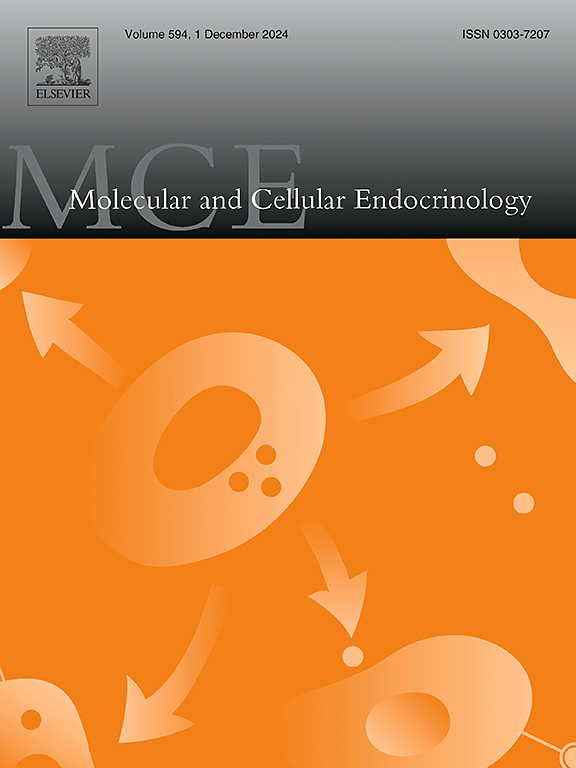牛子宫内膜细胞和细胞外囊泡对高身体能量储备的反应:胚胎到达前miRNA和mRNA调控的见解。
IF 3.6
3区 医学
Q2 CELL BIOLOGY
引用次数: 0
摘要
身体能量储备影响牛的繁殖性能。我们实验室之前的研究结果表明,与中等身体能量储备(MBER)的奶牛相比,高身体能量储备(HBER)奶牛的排卵率和胚胎恢复率较低。为了研究这些生殖差异是否与子宫环境变化有关,通过营养管理将同一牛群的Nelore奶牛分为MBER组和HBER组。在排卵同步和人工授精后,动物在诱导排卵后约120小时被屠宰。采集子宫输卵管交界处(UTJ)和子宫前角(ANT)标本。用冲洗法从子宫液中分离出细胞外囊泡(EVs),并对子宫内膜组织进行分子分析。纳米颗粒跟踪分析显示各组之间EV浓度和大小没有差异。然而,当比较MBER组和HBER组时,miRNA谱分析发现MBER组和HBER组分别在来自UTJ和ANT的ev中有8个和9个差异表达的miRNA,在来自UTJ的子宫内膜细胞中有2个差异表达的miRNA,这表明分子谱存在潜在差异。子宫内膜细胞转录组学分析显示,在MBER组和HBER组之间,UTJ和ANT分别有430和35个差异表达基因(deg)。UTJ中deg数量越多,可能意味着更大的分子响应,这反映在与ANT相比更广泛的途径富集上。通过将预测的miRNA靶点与我们的RNA-seq数据中差异表达的mrna交叉进行miRNA- mrna整合,表明差异表达的基因可能受到组间改变的miRNA的调控,表明miRNA介导的代谢状况对子宫转录组的影响。这些发现表明,高身体能量储备与子宫环境中免疫和代谢相关途径的富集有关,特别是在UTJ中,这可能反映了一种促炎、代谢改变的状态,可能损害早期胚胎发育和母胚通信。本文章由计算机程序翻译,如有差异,请以英文原文为准。
Endometrial cells and extracellular vesicles response to high body energy reserves in bovine: Insights into miRNA and mRNA regulation before embryo arrival
Body energy reserves influence reproductive performance in cattle. Previous findings from our laboratory showed that cows with high body energy reserves (HBER) have lower ovulation and embryo recovery rates compared to cows with moderate reserves (MBER). To investigate whether these reproductive differences are associated with changes in the uterine environment, Nelore cows from the same herd were assigned to MBER or HBER groups through nutritional management. Following estrous synchronization and artificial insemination, animals were slaughtered ∼120 h after ovulation induction. Samples from the uterotubal junction (UTJ) and anterior uterine horn (ANT) were collected. Extracellular vesicles (EVs) were isolated from uterine fluid by flushing, and endometrial tissue was sampled for molecular analysis. Nanoparticle tracking analysis revealed no differences in EV concentration or size between groups. However, when comparing MBER and HBER groups, miRNA profiling identified 8 and 9 differentially expressed miRNAs between MBER and HBER in EVs from the UTJ and ANT, respectively, and 2 differentially expressed miRNAs in endometrial cells from the UTJ, suggesting potential differences in molecular profiles. Transcriptomic analysis of endometrial cells revealed 430 and 35 differentially expressed genes (DEGs) in the UTJ and ANT, respectively, between MBER and HBER groups. The higher number of DEGs in the UTJ may suggest a greater molecular response, which is reflected by more extensive pathway enrichment compared to the ANT. miRNA–mRNA integration, performed by intersecting predicted miRNA targets with the differentially expressed mRNAs from our RNA-seq data, suggests that differentially expressed genes may be regulated by miRNAs altered between groups, indicating miRNA-mediated effects of metabolic condition on the uterine transcriptome. These findings suggest that high body energy reserves are associated with enrichment of immune and metabolism related pathways in the uterine environment, especially in the UTJ, which may reflect a pro-inflammatory, metabolically altered state potentially impairing early embryo development and maternal-embryonic communication.
求助全文
通过发布文献求助,成功后即可免费获取论文全文。
去求助
来源期刊

Molecular and Cellular Endocrinology
医学-内分泌学与代谢
CiteScore
9.00
自引率
2.40%
发文量
174
审稿时长
42 days
期刊介绍:
Molecular and Cellular Endocrinology was established in 1974 to meet the demand for integrated publication on all aspects related to the genetic and biochemical effects, synthesis and secretions of extracellular signals (hormones, neurotransmitters, etc.) and to the understanding of cellular regulatory mechanisms involved in hormonal control.
 求助内容:
求助内容: 应助结果提醒方式:
应助结果提醒方式:


